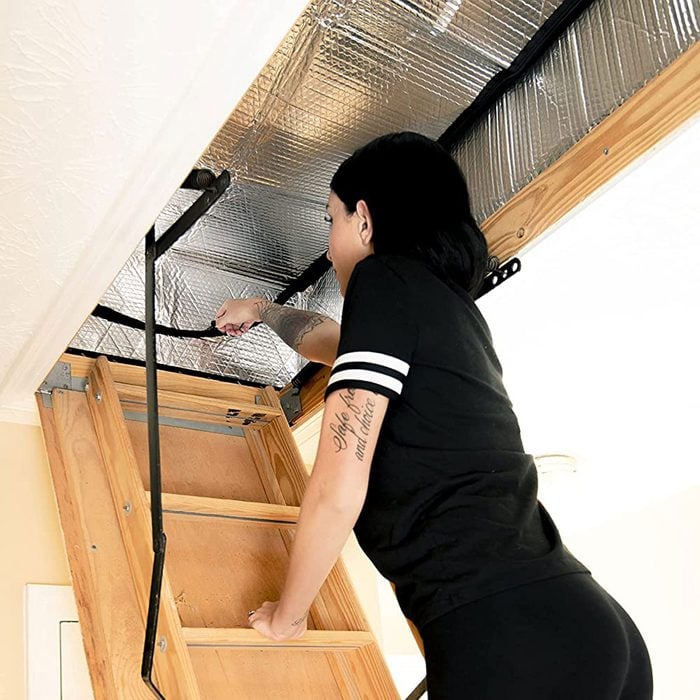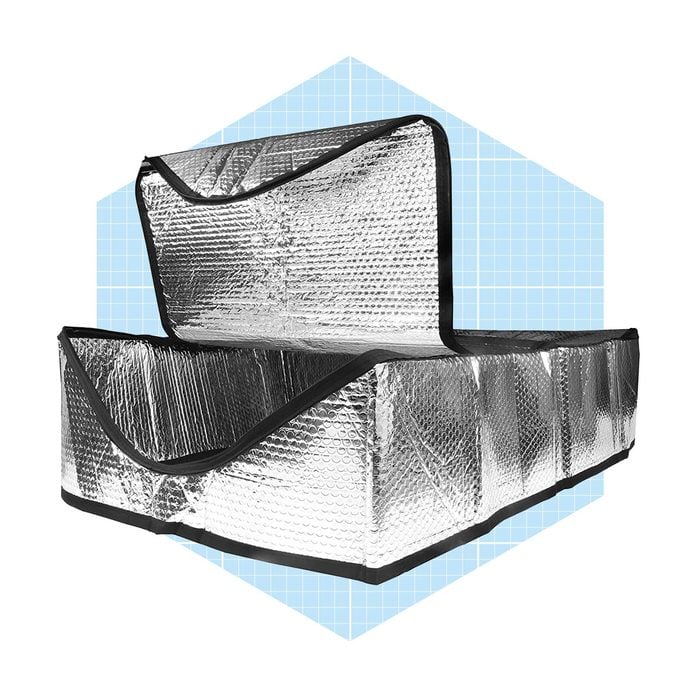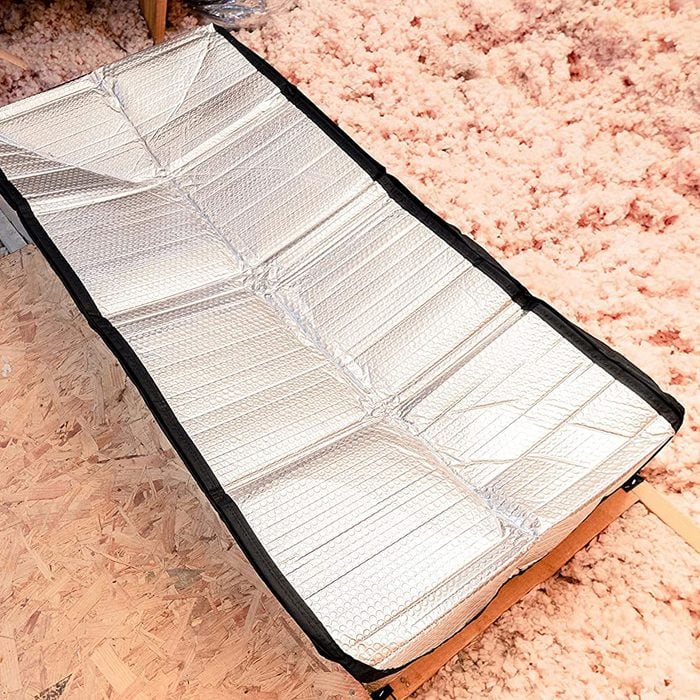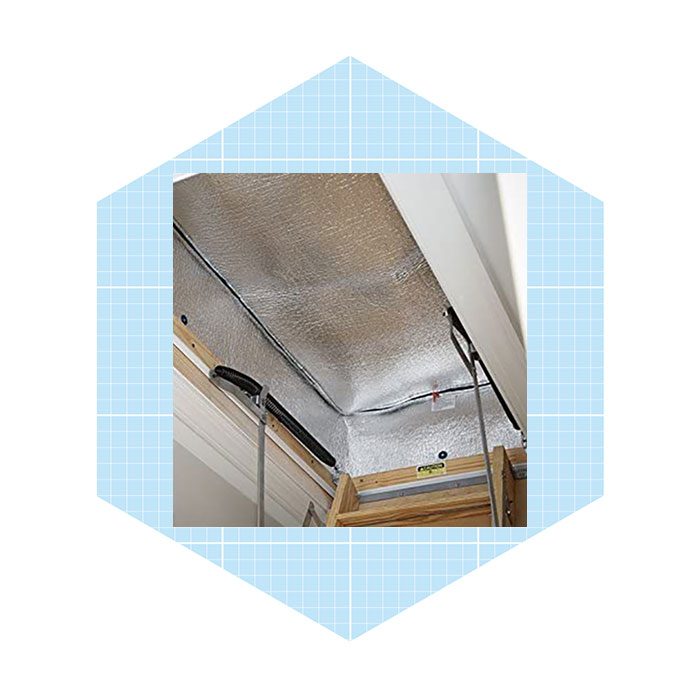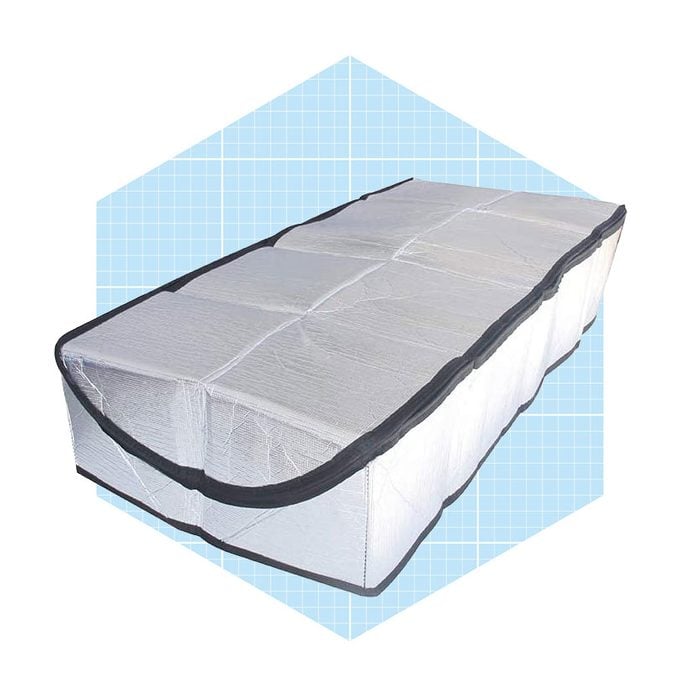Best Heavy-Duty Zippered Attic Door Insulation Cover
The Energy Wise Attic Door Insulation Cover has an insulation value of R-15.5, the highest for zippered insulators (although not by much). A popular and highly reviewed item on Amazon, this product features a reflective foil covering and a fail-safe zipper for easy access.
One Amazon reviewer praised the design, writing: “Having two zippers that meet rather than one that goes from one full side to the other is also super convenient.”
Best Fireproof Attic Stairway Insulation Cover
The zipper-type Panady Attic Stairs Insulation Cover comes with with a 15.4 R-value. It features Class A fire resistance as well as a foil cover that reflects 97% of radiant heat. That’s important for keeping the house cool on hot days.
Amazon reviewers gave it 4.7 stars out of five. Several liked its easy installation, with one writing it took less than five minutes with a staple gun.
Best Fireproof Attic Stairway Insulation Cover, Runner-Up
The Whistler Heavy-Duty Attic Stairway Insulator is another zipper-type insulator with an R-15.4 value. It also features Class A fire resistance and a reflective foil covering.
This insulator has fewer Amazon reviews than the Panady product but still earned 4.6 stars. One reviewer noted on hot summer days, temperatures below the staircase were 10 degrees cooler with the insulator than without.
Best Pull-Down Attic Stairway Insulation Cover
The DGSL Pull-Down Stairway Insulation Cover is essentially a zippered product with a semi-rigid cover that folds back when you open it. When exiting the attic, you must pull down the cover before closing the zipper.
This insulator features bubble wrap enclosed on both sides by foil. Its 14.5 R-value is slightly less than the heavy-duty products. It’s easy to install and also gets great reviews on Amazon (4.7 stars).
Best Tent-Style Attic Stairway Insulation Cover
The Owens Corning Attic Stairway Insulator is one of the easiest stairway insulators to install. You basically bring it into the attic and set it over the stairway opening. That’s it. It’s lightweight and easy to move out of the way when you come back into the attic.
This product consists of foil-encased fiberglass, rated R-10. It isn’t the best insulator out there. But because it sits over the door and doesn’t need to be attached to the frame, it fits stairwells with non-standard dimensions.
Best Basic Attic Stairway Insulation Cover
The Duck Brand Plastic Attic Stairway Cover doesn’t have an R-rating and doesn’t insulate as well as some other products. It does provide some insulation, though. And it works great for anyone who wants to prevent attic insulation and other debris from blowing downstairs.
This is a tent-style cover similar to the Owens Corning product, but it weighs about five pounds less and offers more clearance. Setup is easy: Take it out of the box, unfold it and set it in place.
Best Box-Style Attic Door Insulation Cover
If you were to DIY your stairwell cover, you’d probably come up with something similar to the Battic Attic Stair Cover. It’s basically a box that fits over the stairwell. You can pack it with insulation to get an R-50 value.
This product costs twice as much as other stair covers, and you may have to purchase extra insulation. It comes with weatherstripping to make a seal against the door frame. It’s what you need if your local building code requires the cover to have the same R-value as the rest of the attic.

